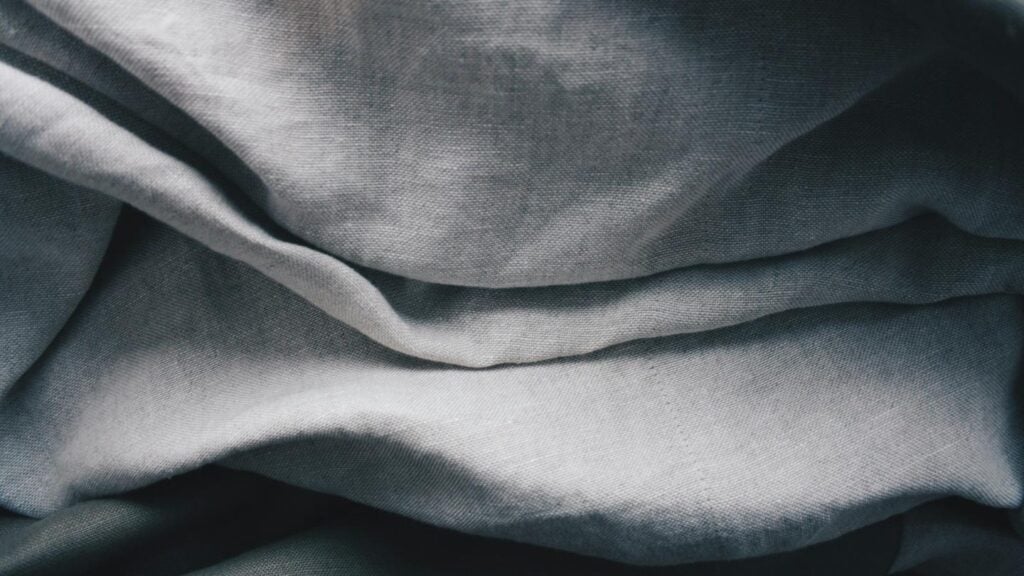2 – Benefits of Choosing Polartec Fabric
3 – Polartec Fabric vs Other Fabrics
4 – How Polartec Fabric Is Manufactured
5 – Common Uses in Fashion
6 – Understanding the Environmental Impact of Polartec Fabric
7 – Exploring Price Points and Value for Money
8 – Conclusion
9 – FAQs
What is Polartec Fabric?
Polartec fabric is a versatile and high-performance material designed to offer both warmth and breathability. Created by the company Polartec, it was initially introduced as fleece fabric in the 1980s, revolutionizing the outdoor apparel industry by providing a lightweight alternative to traditional wool. Polartec fabric is made from synthetic fibers, primarily polyester, and is engineered to trap air and retain body heat, making it an ideal choice for activewear, outdoor clothing, and cold-weather garments.
Here’s a breakdown of what makes Polartec fabric special:
- Origin: Polartec was originally developed as a solution to the need for warm, moisture-wicking, and lightweight clothing for outdoor enthusiasts. It is now one of the most widely recognized names in performance fabrics.
- Composition: The fabric is made from polyester fibers, often blended with other materials like spandex for stretch or nylon for added durability. The unique construction of the fibers allows air to be trapped between the threads, providing insulation without the bulk.
- Properties: Polartec fabric is known for its ability to regulate temperature by allowing moisture to evaporate, keeping the wearer dry and warm in varying conditions. It also offers durability, stretch, and resistance to pilling, making it perfect for both casual and high-performance wear.

Benefits of Choosing Polartec Fabric
Polartec fabric has earned its reputation as one of the leading materials in the performance fabric industry, particularly in outdoor and activewear. Its unique qualities make it a top choice for consumers looking for high-performance garments. Here are some of the key benefits of choosing Polartec fabric:
- Lightweight and Warm: Polartec fabric provides excellent insulation without the heavy weight of traditional fabrics like wool. Its innovative fiber structure traps air, helping to retain body heat while keeping the garment lightweight and easy to wear.
- Breathability: Unlike many other insulating fabrics, Polartec fabric is highly breathable, allowing moisture to escape and keeping the wearer dry. This makes it ideal for high-intensity activities where sweat management is essential, such as hiking, skiing, or running.
- Moisture-Wicking: The fabric’s ability to wick moisture away from the skin is one of its most valuable features. It ensures that sweat is quickly pulled away from the body, preventing discomfort and cold build-up during physical activities.
- Durability: Polartec fabric is known for its strength and resistance to wear and tear. It resists pilling, maintaining its smooth appearance even after repeated use and washing, which enhances the longevity of garments made with it.
- Versatility: Available in various weights and styles, Polartec fabric can be used in a wide range of applications. From lightweight fleece for layering to thick, insulated fabrics for outerwear, it is suitable for both activewear and casual everyday wear.
- Sustainability: Polartec is committed to sustainability, using recycled polyester in many of its fabrics, making it a more eco-friendly option compared to virgin polyester.
- Quick-Drying: Polartec fabric dries quickly, allowing the wearer to stay comfortable and dry, whether in wet weather or after intense physical activity.

Polartec Fabric vs Other Fabrics
Polartec fabric is renowned for its superior performance, but how does it compare to other similar fabrics? Here’s a brief comparison with a few common options in the outdoor and activewear categories:
Polartec Fabric vs Fleece
- Weight and Warmth: Polartec is lighter than traditional fleece while offering similar warmth, making it less bulky and more flexible.
- Moisture-Wicking: Unlike regular fleece, Polartec excels at pulling moisture away from the skin, keeping the wearer dry and comfortable during physical activity.
- Durability: Polartec resists pilling and retains its smooth texture longer than traditional fleece, which can wear down over time.
Polartec Fabric vs Microfleece
- Breathability and Moisture-Wicking: Microfleece is lightweight and breathable, but Polartec outperforms it in moisture-wicking and temperature regulation, making it more effective for active use.
- Warmth: Polartec provides more consistent warmth due to its advanced fiber structure, making it better for cold-weather conditions.
Polartec Fabric vs Merino Wool
- Weight: Merino wool is heavier and bulkier than Polartec. Polartec offers warmth with less weight, making it ideal for layering.
- Moisture Control: Merino wool naturally absorbs moisture, which can lead to a damp feeling. Polartec, on the other hand, keeps the wearer dry by wicking away moisture more efficiently.
- Drying Time: Polartec fabric dries much faster than merino wool, making it a better option for active or wet environments.
Polartec Fabric vs Polyester Fleece
- Breathability and Comfort: While polyester fleece is breathable, Polartec has superior moisture-wicking properties, making it more breathable and comfortable during physical exertion.
- Durability: Polartec resists wear and pilling better than standard polyester fleece, ensuring longer-lasting use.
Polartec Fabric vs Nylon
- Insulation and Comfort: Nylon is durable and water-resistant, but Polartec offers superior warmth, flexibility, and comfort, making it a better option for high-performance layering.
- Weight: Polartec is lighter and more breathable than nylon, providing more comfort during physical activity.

How Polartec Fabric Is Manufactured
The manufacturing process of Polartec fabric involves several key steps that transform raw materials into a high-performance textile used for a wide range of outdoor, active, and fashion apparel. Here’s a simplified breakdown of how Polartec fabric is made:
- Fiber Selection: Polartec uses synthetic fibers, primarily recycled polyester, with possible blends of spandex for stretch or nylon for durability, making it a sustainable option.
- Spinning and Extrusion: Polyester fibers are melted and extruded into yarns, which are prepared for weaving or knitting.
- Knitting or Weaving: The yarns are knitted using techniques like “warp knitting” to create a breathable fabric that offers warmth without bulk.
- Brushing or Texturing: The fabric is brushed to create a soft, raised surface, enhancing its insulation by trapping air.
- Dyeing and Finishing: The fabric is dyed and treated to maintain color vibrancy, improve moisture-wicking, and add durability, with some fabrics also receiving windproof or waterproof treatments.
- Quality Control: The fabric undergoes testing for breathability, moisture-wicking, pilling resistance, and durability to ensure it meets performance standards.
- Final Product: Once approved, the fabric is used in various products like jackets, sportswear, and accessories, with variations like Polartec Power Stretch, Thermal Pro, and Alpha for specific needs.
Produce your fashion collection with us
Common Uses in Fashion
Polartec fabric is widely used in fashion due to its versatile properties, providing warmth, breathability, and moisture-wicking benefits. Here are some of its common applications:
- Outdoor and Performance Apparel: Polartec is used in jackets, coats, and outerwear for outdoor activities like hiking and skiing. It offers warmth and breathability while wicking moisture to keep you dry during high-intensity activities.
- Activewear: Ideal for sportswear such as running jackets, cycling gear, and athletic pants, Polartec’s moisture-wicking, quick-drying properties and lightweight nature ensure comfort and freedom of movement during workouts and outdoor activities.
- Winter Accessories: Polartec is commonly found in hats, gloves, and mittens, offering insulation and moisture control to keep you warm and dry during cold-weather outdoor activities.
- Footwear: Polartec is used in boot linings and insoles, providing insulation and moisture-wicking to keep feet warm and dry in wet or snowy conditions.

Understanding the Environmental Impact of Polartec Fabric
Polartec fabric is designed with sustainability in mind, aiming to reduce its environmental footprint throughout its lifecycle. Here’s a brief look at its environmental impact:
- Use of Recycled Materials: Polartec incorporates recycled polyester, often sourced from plastic bottles or industrial waste. This reduces the need for virgin polyester, lessening plastic waste and lowering carbon emissions during production.
- Energy-Efficient Manufacturing: Polartec optimizes energy use in its manufacturing process, utilizing renewable energy sources and improving production efficiency to minimize environmental impact.
- Durability and Longevity: Known for its strength, Polartec fabric resists wear and tear, contributing to its longevity. This reduces the need for frequent replacements and helps decrease waste over time.
- Sustainable Product Lifecycle: Polartec promotes recycling by designing fabrics that can be reprocessed at the end of their life, further reducing waste and landfill impact.
- Water and Chemical Management: Polartec uses systems to reduce water consumption and minimize harmful chemicals, helping to protect ecosystems and reduce pollution.

Exploring Price Points and Value for Money
Polartec fabric is widely regarded for its performance, durability, and comfort, but it’s important to understand how it compares in terms of price and overall value for money. Here’s an overview of Polartec’s pricing structure and what makes it a worthwhile investment for many consumers:
- Price Range: Polartec fabrics typically range from €20 to €50 per meter, with finished products like jackets and activewear priced higher. While it may cost more than standard fabrics, its performance justifies the price.
- Performance vs. Cost: Polartec offers long-term value due to its durability, moisture-wicking, and insulating properties. Although the upfront cost is higher, its longevity and superior performance make it a solid investment.
- Durability and Longevity: Polartec’s resistance to wear and pilling ensures longer-lasting garments, reducing the need for replacements and enhancing value over time.
- Versatility and Multi-Use: Polartec’s adaptability to various weather conditions and applications—from outdoor gear to casual fashion—provides more use per product, further increasing value.
- Sustainability: Polartec’s use of recycled polyester adds environmental value, making it a sustainable choice that justifies the price for eco-conscious consumers.

Conclusion
Polartec fabric offers exceptional value for money due to its combination of high performance, durability, and versatility. While its price may be higher than standard fabrics, its long-lasting properties, moisture-wicking capabilities, and adaptability to various conditions make it a worthwhile investment. Additionally, Polartec’s commitment to sustainability through the use of recycled materials further enhances its value. For those seeking high-quality, eco-friendly, and high-performance fabrics, Polartec presents a smart and sustainable choice.
FAQs
- What is Polartec fabric?
Polartec fabric is a high-performance textile known for its warmth, breathability, and moisture-wicking properties. It is used in outdoor apparel, activewear, and fashion items due to its versatility and comfort. - Is Polartec fabric sustainable?
Yes, Polartec uses recycled polyester in many of its fabrics, reducing plastic waste and lowering carbon emissions. The company also focuses on improving the energy efficiency of its manufacturing process. - What makes Polartec different from regular fleece?
Polartec is lighter and more breathable than traditional fleece. It also has superior moisture-wicking capabilities and retains its performance for longer, resisting pilling and wear. - Can Polartec fabric be used for winter outerwear?
Yes, Polartec is commonly used in jackets, coats, and other winter apparel due to its ability to provide warmth without bulk and its moisture-wicking properties to keep you dry. - How does Polartec compare to merino wool?
While both fabrics offer warmth, Polartec is lighter, dries faster, and is easier to care for than merino wool, making it a more practical option for active use and outdoor activities. - Is Polartec fabric waterproof?
Polartec fabric is not inherently waterproof but can be treated with a water-resistant finish. Some specialized versions, like Polartec NeoShell, offer waterproof and breathable properties. - How do I care for Polartec fabric?
Polartec is easy to care for and typically machine washable. It is recommended to wash it in cold water and avoid fabric softeners to maintain its performance and softness. - Can Polartec fabric be used in activewear?
Yes, Polartec is ideal for activewear due to its moisture-wicking, breathable, and quick-drying properties. It’s commonly used in running jackets, cycling gear, and athletic pants. - Does Polartec fabric shrink?
Polartec fabric is designed to resist shrinking when cared for properly. However, excessive heat during washing or drying can cause some fabrics to shrink, so it’s important to follow care instructions. - Is Polartec fabric suitable for sensitive skin?
Yes, Polartec fabric is soft and designed for comfort, making it suitable for sensitive skin. It also helps to regulate moisture, preventing irritation caused by sweat build-up.







